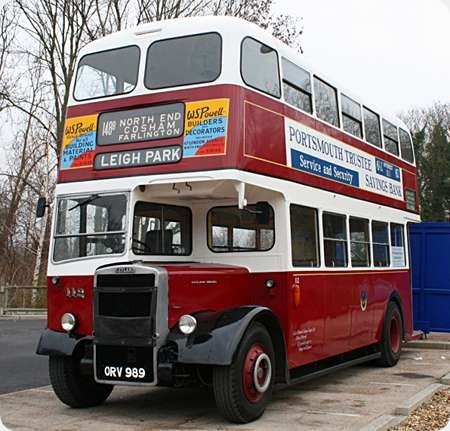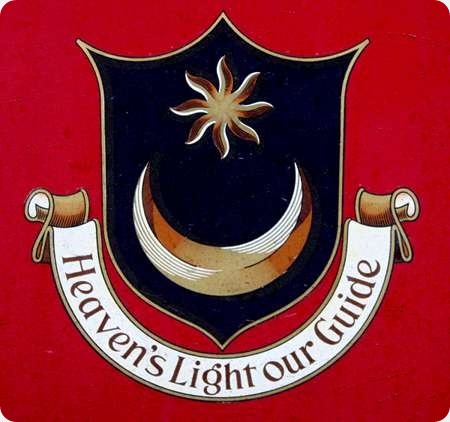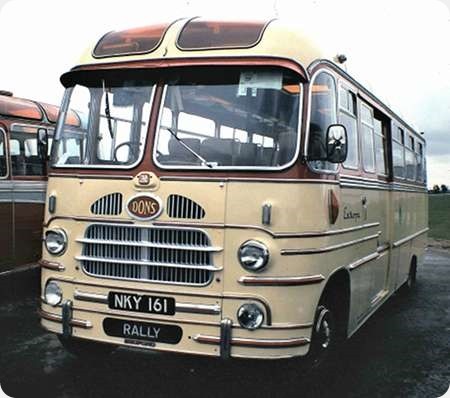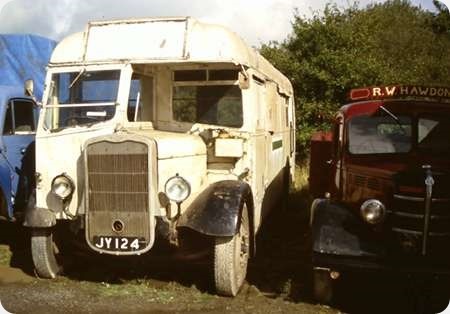Portsmouth Corporation – Leyland Titan – ORV 989 – 112
Portsmouth Corporation
1958
Leyland Titan PD2/40
MCCW H30/26R
ORV 989 is another in the long line of Portsmouth buses with the registration numbers in the ‘high 900’ series. It dates from 1958 and is a Leyland Titan PD2/40 with Metropolitan Cammell H56R body. It is seen in the St Catherine’s park and ride car park during the King Alfred running day on 1 January 2009.
This second view shows the Municipal Crest.
Photograph and Copy contributed by Pete Davies
25/12/16 – 10:22
What a nice Christmas Day sight! This bus is a superb example of restoration as not only does it look smart but it looks "real", in other words like a Portsmouth bus would have done at the time. I think the adverts play no small part in this and of course they are not appropriate for every restoration.
David Beilby
26/12/16 – 06:54
Thank you, David. I must say, having seen other versions of Portsmouth’s livery, the others were nowhere near in the "elegance" department.
Pete Davies
26/12/16 – 06:55
Drop windows on an Orion, was this a design feature unique to Portsmouth?
Ronnie Hoye
28/12/16 – 06:39.
All our PD2s with Orion bodies had half drops.
Dave French
28/12/16 – 16:29
More details are given on //www.cpptd.co.uk/vehicles-cpptd.htm
Andy Hemming
24/04/19 – 06:57
I’m researching the production of Spitfires after the Woolston factories were bombed and have just met an 80+ gent who remembers a bus garage turned lorry garage in Twyford Avenue/ Alexandra Park area of Portsmouth where he saw plain metal Spitfire wings going in through big front doors and camouflage painted ones coming out. He said it reverted to be a lorry garage after the war. Anyone with info on where this garage might have been and anything about the wartime use of it would be great.
Alan Matlock
25/04/19 – 05:37
In 1933 and 1947 There was a Hants and Dorset depot on Villiers Rd, which is only half a mile away from Twyford Ave, and a Corporation depot was opposite it. https://www.old-maps.co.uk/#/Map/440401
John Lomas
25/04/19 – 08:15
Sorry, John, but the section of map shows Twyford Avenue in Southampton. The Corporation depot opposite the H&D one in Villiers Road was behind the Police Station. We are talking about Portsmouth’s Twyford Avenue if we are dealing with Alan Matlock’s enquiry.
The H&D depot in Villiers Road was one of two "central works" type places, the other being in Winchester Road. One had the body works and the other had the chassis works. This was before the firm grew tired of waiting for planning consent to merge the two and went to Barton Park (now home of Solent Blue Line and Xelabus) in the early 1980s.
Pete Davies
26/04/19 – 07:41
Silly me.
1949 old-map shows National Garage on Twyford Ave., Portsmouth; opposite Jervis Rd https://www.old-maps.co.uk/#/Map/464590/
John Lomas




